Premium Only Content
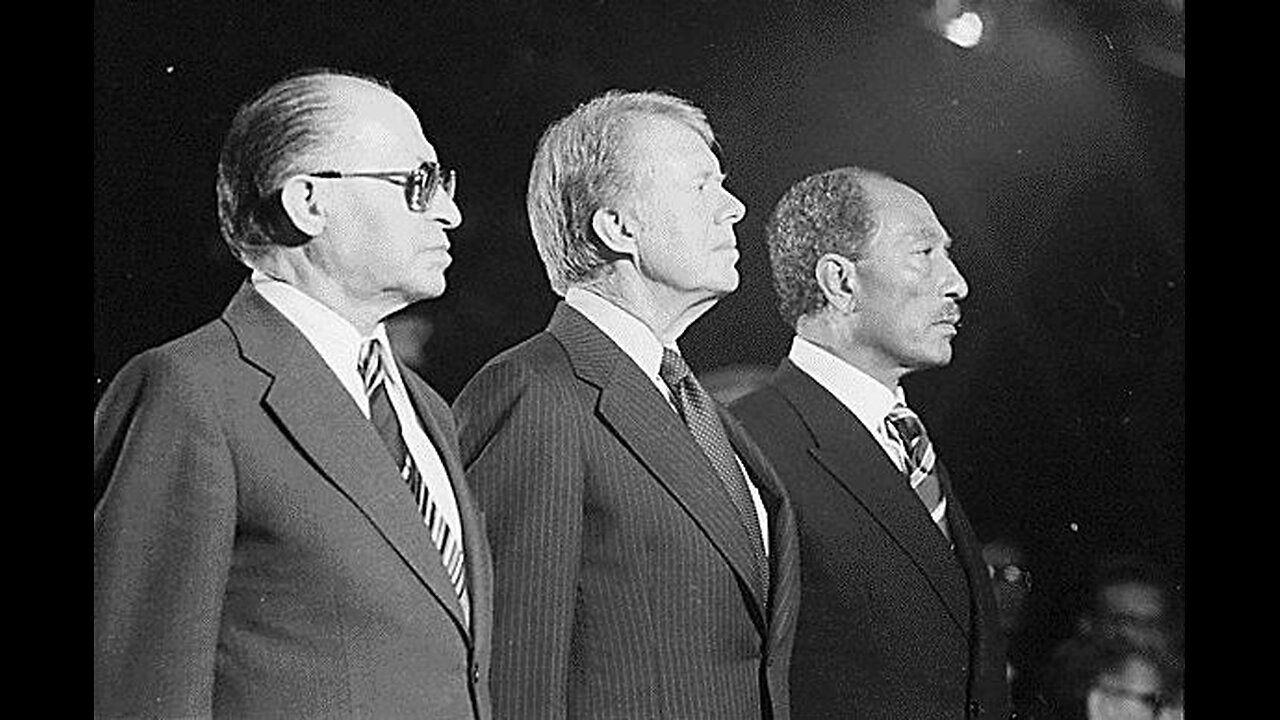
Inside Israel
The dark side of history: https://thememoryhole.substack.com/
In September 1970, members of the Popular Front for the Liberation of Palestine (PFLP) hijacked four airliners bound for New York City and one for London. Three aircraft were forced to land at Dawson's Field, a remote desert airstrip near Zarqa, Jordan, formerly Royal Air Force Station Zarqa, which then became PFLP's "Revolutionary Airport". By the end of the incident, one hijacker had been killed and one injury reported. This was the second instance of mass aircraft hijacking, after an escape from communist Czechoslovakia in 1950.
On 6 September, TWA Flight 741 from Frankfurt (a Boeing 707) and Swissair Flight 100 from Zürich (a Douglas DC-8) were forced to land at Dawson's Field.[1][2] On the same day, the hijacking of El Al Flight 219 from Amsterdam (another 707) was foiled: hijacker Patrick Argüello was shot and killed, and his partner Leila Khaled was subdued and handed over to British authorities in London. Two PFLP hijackers, who were prevented from boarding the El Al flight, hijacked instead Pan Am Flight 93, a Boeing 747, diverting the large plane first to Beirut and then to Cairo, rather than to the small Jordanian airstrip. On 9 September, a fifth plane, BOAC Flight 775, a Vickers VC10 coming from Bahrain, was hijacked by a PFLP sympathizer and taken to Dawson's Field in order to pressure the British to free Khaled.
While the majority of the 310 hostages were transferred to Amman and freed on 11 September, the PFLP segregated the flight crews and Jewish passengers, keeping the 56 Jewish hostages in custody, while releasing the non-Jews. Six hostages in particular were kept because they were men and American citizens, not necessarily Jews: Robert Norman Schwartz, a U.S. Defense Department researcher stationed in Thailand; James Lee Woods, Schwartz's assistant and security detail; Gerald Berkowitz, an American-born Jew and college chemistry professor; Rabbi Avraham Harari-Raful and his brother Rabbi Yosef Harari-Raful, two Sephardi Brooklyn school teachers; and John Hollingsworth, a U.S. State Department employee. Schwartz, whose father was Jewish, was a convert to Catholicism.[3][4][5] On 12 September, prior to their announced deadline, the PFLP used explosives to destroy the empty planes, as they anticipated a counterstrike.[1]
The PFLP's exploitation of Jordanian territory was an example of the increasingly autonomous Arab Palestinian activity within the Kingdom of Jordan – a serious challenge to the Hashemite monarchy of King Hussein. Hussein declared martial law on 16 September and from 17 to 27 September his forces deployed into Palestinian-controlled areas in what became known as Black September in Jordan, nearly triggering a regional war involving Syria, Iraq, and Israel.
A swift Jordanian victory, however, enabled a 30 September deal in which the remaining PFLP hostages were released in exchange for Khaled and three PFLP members in a Swiss prison.[1]
Hijackings
El Al Flight 219
El Al Flight 219
4X-ATB, the aircraft involved, in July 1970
Hijacking
Date 6 September 1970
Summary Attempted hijacking
Site English Channel
Aircraft
Aircraft type Boeing 707–458
Operator El Al Israel Airlines
Registration 4X-ATB
Flight origin Lod International Airport
Stopover Amsterdam Schiphol Airport
Destination John F. Kennedy Int'l Airport
Passengers 138
Crew 10
Fatalities 1 (hijacker)
Injuries 1
Survivors 148
El Al Flight 219 (type Boeing 707, serial 18071/216, registration 4X-ATB) originated in Tel Aviv, Israel, and was headed to New York City. It had 138 passengers and 10 crew members aboard. It stopped in Amsterdam, Netherlands, and was hijacked shortly after it took off from there by Patrick Argüello,[6] a Nicaraguan American, and Leila Khaled, a Palestinian.
The original plan was to have four hijackers aboard this flight, but two were prevented from boarding in Amsterdam by Israeli security—these two conspirators, traveling under Senegalese passports with consecutive numbers,[7] were prevented from flying on El Al on 6 September. They purchased first-class tickets on Pan Am Flight 93 and hijacked that flight instead.
Posing as a married couple, Argüello and Khaled boarded the plane using Honduran passports—having passed through a security check of their luggage—and were seated in the second row of tourist class. Once the plane was approaching the British coast, they drew their guns and grenades and approached the cockpit, demanding entrance. According to Khaled, in an interview in 2000,
So half an hour (after take off) we had to move. We stood up. I had my two hand grenades and I showed everybody I was taking the pins out with my teeth. Patrick stood up. We heard shooting just the same minute and when we crossed the first class, people were shouting but I didn't see who was shooting because it was behind us. So Patrick told me "go forward I protect your back." So I went and then he found a hostess and she was going to catch me round the legs. So I rushed, reached to the cockpit, it was closed. So I was screaming "open the door." Then the hostess came; she said "she has two hand grenades," but they did not open (the cockpit door) and suddenly I was threatening to blow up the plane. I was saying "I will count and if you don't open I will blow up the plane."[8]
After being informed by intercom that a hijacking was in progress, Captain Uri Bar-Lev (39), decided not to accede to their demands:
I decided that we were not going to be hijacked. The security guy was sitting here ready to jump. I told him that I was going to put the plane into negative-G mode. Everyone would fall. When you put the plane into negative, it's like being in a falling elevator. Instead of the plane flying this way, it dives and everyone who is standing falls down.[6]
Bar Lev put the plane into a steep nosedive which threw the two hijackers off-balance. Argüello reportedly threw his sole grenade down the airliner aisle, but it failed to explode, and he was hit over the head with a bottle of whiskey by a passenger after he drew his pistol. Argüello shot steward Shlomo Vider and according to the passengers and Israeli security personnel, was then shot by a sky marshal.[7] His accomplice Khaled was subdued by security and passengers, while the plane made an emergency landing at London Heathrow Airport; she then claimed that Argüello was shot four times in the back after he and Khaled failed to hijack the airplane. Vider underwent emergency surgery and recovered from his wounds; Argüello died in the ambulance taking both him and Khaled to Hillingdon Hospital. Khaled was then arrested by British police.[9]
Nationalities on Flight 219
Nationality Passengers Crew Total
Israel 118 10 128
Netherlands 10 0 10
United States 9 0 9
Canada 1 0 1
Total 138 10 148
TWA Flight 741
TWA Flight 741
A TWA Boeing 707 similar to the hijacked aircraft
Hijacking
Date 6 September 1970
Summary Hijacking
Site Brussels, Belgium
Aircraft
Aircraft type Boeing 707–331B
Operator Trans World Airlines
Registration N8715T
Flight origin Lod International Airport
1st stopover Ellinikon International Airport
2nd stopover Frankfurt International Airport
Destination John F. Kennedy Int'l Airport
Passengers 144
Crew 11
Injuries 0
Survivors 155 (all)
TWA Flight 741 (type Boeing 707, serial 18917/460, registration N8715T[10]) was a round-the-world flight carrying 144 passengers and a crew of 11. The flight on this day was flying from Tel Aviv to Athens, Frankfurt am Main, West Germany, and then to New York City, and was hijacked over Belgium on the Frankfurt-New York leg. It was crewed by Captain Carroll D. Woods, First Officer Jim Majer and flight engineer Al Kiburis.
Flight 741's purser, Rudi Swinkles, recalled seeing a passenger running toward first class. Assuming it was an angry husband chasing his wife, Swinkles ran after him. The hijackers were at the cockpit door, ordering a flight attendant to open the door. The male hijacker turned around, pointing a nickel-plated .38 revolver and a hand grenade at Swinkles and yelled "Get back! Get back!" Swinkles dove behind the bulkhead first class divider.[11]
Hijackers gained control of the cockpit. The male hijacker kept his revolver pointed at Majer until the plane landed at Dawson's Field, saying "I want you to turn this plane around." The female hijacker stated on the intercom, "This is your new captain speaking. This flight has been taken over by the Popular Front for the Liberation of Palestine. We will take you to a friendly country with friendly people."[5] The female hijacker also ordered everyone in first class to move back to coach.
It landed at Dawson's Field in Jordan at 6:45 p.m. local time.[12][13]
Yitzchak Hutner[14] was one of the passengers.
Martha Hodes, an American then 12 who was on this flight with her 13-year-old sister, published her account of the hijacking in 2023.[15] Her book is entitled My Hijacking.
Nationalities on Flight 741
Nationality Passengers Crew Total
West Germany 16 2 18
Greece 2 0 2
Israel 55 0 55
India 3 0 3
Italy 1 0 1
Netherlands 1 0 1
United Kingdom 18 0 18
United States 51 9 60
Total 147 11 158
Swissair Flight 100
Swissair Flight 100
HB-IDD, the DC-8 involved, at Zurich Airport in 1965.
Hijacking
Date 6 September 1970
Summary Hijacking
Site Dijon, France
Aircraft
Aircraft type Douglas DC-8-53
Aircraft name Nidwalden
Operator Swissair
Registration HB-IDD
Flight origin Zurich Kloten Airport
Destination John F. Kennedy Int'l Airport
Passengers 145
Crew 12
Injuries 0
Survivors 157 (all)
Swissair Flight 100 (type Douglas DC-8-53, registration HB-IDD, named Nidwalden), built in 1963, was carrying 143 passengers and 12 crew from Zürich-Kloten Airport, Switzerland, to New York JFK. The plane was hijacked over France minutes after the TWA flight. A male and a female seized the plane, one of them carrying a silver revolver. An announcement was made over the intercom that the plane had been taken over by the PFLP as it was diverted to Dawson's Field, increasing the hostage number to 306 hostages.[16][17][18]
When all the non-Israeli and non-Jewish passengers and crew were released, First Officer Horst Jerosch remained as a captive.[19]
Nationalities on Flight 100
[citation needed]
Nationality Passengers Crew Total
France 3 0 3
West Germany 25 0 25
Israel 20 0 20
Switzerland 57 10 67
United States 26 0 26
Other 14 2 16
Total 145 12 157
Pan Am Flight 93
Pan Am Flight 93
Boeing 747-121 (N750PA), similar to the hijacked plane in PA93.
Hijacking
Date 6 September 1970
Summary Hijacking
Site Cairo
Aircraft
Aircraft type Boeing 747–121
Aircraft name Clipper Fortune
Operator Pan American World Airways
Registration N752PA
Flight origin Brussels Airport
Stopover Amsterdam Schiphol Airport
Destination John F. Kennedy Int'l Airport
Passengers 152
Crew 17
Injuries 0
Survivors 169 (all)
Pan Am Flight 93 (type Boeing 747, serial 19656/34, registration N752PA,[20] name Clipper Fortune) was carrying 152 passengers and 17 crew,[21] of which 85 were US citizens.[22] The flight was from Brussels, Belgium, to New York, with a stop in Amsterdam. The two hijackers bumped from the El Al flight boarded and hijacked this flight as a target of opportunity.
Flight director John Ferruggio recalled,
We were ready for take off in Amsterdam, and the aircraft came to an abrupt stop in the middle of the runway. And Captain Priddy called me up into the cockpit and says, "I'd like to have a word with you." I went up to the cockpit, and he says, "We have two passengers by the name of Diop and Gueye." He says, "Go down and try to find them in the manifest, because I would like to have a word with them." ... So Captain Priddy sat them down at these two seats over here. He gave them a pretty good pat. They had a Styrofoam container in their groin area where they carried the grenade, and the 25-Cal. pistols. But this we found out much later.[11]
The plane first landed in Beirut, where it refueled and picked up several associates of the hijackers, along with enough explosives to destroy the entire plane. It then landed in Cairo after uncertainty whether the Dawson's Field airport could handle the size of the new Boeing 747 jumbo jet. Flight director John Ferruggio, who led the plane's evacuation, is credited with saving the plane's passengers and crew.[23] The plane was blown up at Cairo seconds after it had been evacuated. This was the first hull loss of a Boeing 747.[24] An audio recording of Feruggio's landing instructions to passengers was made by one of them and can be heard in a National Public Radio report.[25] The hijackers were arrested by Egyptian police.
Nationalities on Flight 93
Nationality Passengers Crew Total
Belgium 25 0 25
France 25 0 25
West Germany 10 0 10
Indonesia 2 0 2
Israel 2 0 2
Netherlands 35 3 38
Suriname 2 0 2
United Kingdom 2 0 2
United States 71 14 85
Total 152 17 169
BOAC Flight 775
BOAC Flight 775
A BOAC Vickers VC10, a similar aircraft to that hijacked
Hijacking
Date 9 September 1970
Summary Hijacking
Site Persian Gulf
Aircraft
Aircraft type Vickers VC-10-1151
Operator British Overseas Airways Corporation
Registration G-ASGN
Flight origin Sahar International Airport
1st stopover Bahrain International Airport
2nd stopover Beirut International Airport
Destination London Heathrow Airport
Passengers 105
Crew 9
Injuries 0
Survivors 114 (all)
On 9 September a fifth plane, BOAC Flight 775, a Vickers VC10 (registration G-ASGN[26]), flying from Bombay (now Mumbai) to London via Bahrain and Beirut was hijacked after departing Bahrain and forcibly landed at Dawson's Field. This was the work of a PFLP sympathizer who wanted to influence the British government to free Leila Khaled.[27]
Footage of the plane taking off from Beirut for Dawson's Field is in the Pathe News archive.[28]
Nationalities on Flight 775
Nationality Passengers Crew Total
Albania 5 0 5
Denmark 15 0 15
France 25 0 25
West Germany 5 0 5
India 4 0 4
United Kingdom 25 9 34
United States 21 0 21
Total 105 9 114
Hostage accounts
The aircraft being blown up in Dawson's Field on 12 September 1970
Unnamed passengers later recounted their days as hostages.
Unknown speaker 1: "I was held hostage in the front of the plane by the Arabs. They wouldn't believe that I was an American citizen, because they saw my passport that I was in Israel two weeks before. They thought I was connected with the Israeli military, and I was held at gunpoint in front of the plane."
Unknown speaker 2: "Well, then they were told that we were being hijacked to Beirut, which we, we originally were, and everyone was to remain calm and do exactly what they said."
Unknown speaker 3: "I landed at the airport, we got off, and they told the captain that we had three minutes to evacuate; but I didn't think there were still a couple of people on board when they blew the, they blew the front part of the plane up. They had dynamite all over the front and the back of the plane. They brought on 20 kilos of plastic dynamite or something in Beirut."[29]
Days in the desert
Jordanian Army chief of staff Zaid ibn Shaker checks on the freed hostages, 25 September 1970.
On 7 September 1970, the hijackers held a press conference for 60 members of the media who had made their way to what was being called "Revolution Airport". About 125 hostages were transferred to Amman, while the American, Israeli, Swiss, and West German citizens were held on the planes.[30] Jewish passengers were also held. Passenger Rivke Berkowitz of New York, interviewed in 2006, recalled "the hijackers went around asking people their religion, and I said I was Jewish." Another Jewish hostage, 16-year-old Barbara Mensch (sister of Peter Mensch and sister-in-law of former UK MP Louise Mensch), was told she was "a political prisoner."[5]
As groups of the remaining passengers and crew were assembled on the sand in front of the media, members of the PFLP, among them Bassam Abu Sharif, made statements to the press. Sharif claimed that the goal of the hijackings was "to gain the release of all of our political prisoners jailed in Israel in exchange for the hostages."[11][31]
In the United States, President Richard Nixon met with his advisers on 8 September and ordered United States Secretary of Defense Melvin Laird to bomb the PFLP positions in Jordan. Laird refused[citation needed] on the pretext that the weather was unfavorable, and the idea was dropped. The 82nd Airborne Division was put on alert, the Sixth Fleet was put to sea, and military aircraft were sent to Turkey in preparation for a possible military strike.[32]
United States President Richard Nixon advised a direct military response to the hijackings.
In contrast, British Prime Minister Edward Heath decided to negotiate with the hijackers, ultimately agreeing to release Khaled and others in exchange for hostages. This was bitterly opposed by the United States:
Tensions between London and Washington are reflected in a bitterly acrimonious telephone conversation between top Foreign Office official Sir Denis Greenhill and senior White House aide Joseph Sisco. ... "I think your government would want to weigh very, very carefully the kind of outcry that would occur in this country against your taking this kind of action." Greenhill replied: "Well, they do, Joe, but there is also an outcry in this country," expressing concern that "Israel won't lift a bloody finger and ... our people get killed. You could imagine how bad that would look, and if it all comes out that we could have got our people out but for the obduracy of you and other people so to speak. ... I mean people say, why the bloody hell didn't you try?"[33]
On 9 September the United Nations Security Council demanded the release of the passengers, in Resolution 286. The following day, fighting between the PFLP and Jordanian forces erupted in Amman at the Intercontinental Hotel, where the 125 women and children were being kept by the PFLP, and the Kingdom appeared to be on the brink of full-scale civil war.[11] The destruction of the aircraft on 12 September highlighted the impotence of the Jordanian government in Palestinian-controlled areas, and the Palestinians declared the city of Irbid to be "liberated territory", in a direct challenge to Hussein's rule.
On 13 September the BBC World Service broadcast a government announcement in Arabic saying that the UK would release Khaled in exchange for the hostages.[34]
According to United States Secretary of State Henry Kissinger, "At this point, whether because [American] readiness measures had given [King Hussein] a psychological lift or because he was reaching the point of desperation, Hussein resolved on an all-out confrontation with the fedayeen."[35]
Complicating the international crisis was the fact that Syria and Iraq, which had links with the USSR, had already threatened to intervene on behalf of Palestinian groups in any confrontation with the Kingdom of Jordan. According to British documents declassified under the "thirty year rule", an anxious King Hussein asked the UK and United States to pass a request to Israel to bomb Syrian troops if they entered Jordan in support of the Palestinians.[34] When a Syrian tank crossed the border, Israeli aircraft overflew the area in warning.
Resolution and consequences
King Hussein declared martial law on 16 September and initiated the military actions later known as the Black September conflict. Hostage David Raab described the Jordanian military actions:
We were in the middle of the shelling since Ashrafiyeh [neighbourhood in Amman] was among the Jordanian Army's primary targets. Electricity was cut off, and again we had little food or water. Friday afternoon, we heard the metal tracks of a tank clanking on the pavement. We were quickly herded into one room, and the guerrillas threw open the doors to make the building appear abandoned so it wouldn't attract fire. Suddenly, the shelling stopped.[30]
About two weeks after the start of the crisis, the remaining hostages were recovered from locations around Amman and exchanged for Leila Khaled and several other PFLP prisoners. The hostages were flown to Cyprus and then to Rome's Leonardo da Vinci Airport, where on 28 September they met President Nixon, who was conducting a State visit to Italy and the Vatican.[36] Speaking to reporters that day, Nixon noted he had told the released captives that:
[A]s a result of what they had been through... the possibility of reducing hijackings in the future had been substantially increased, because the international community was outraged by these incidents. Now we have not only mobilized guards on our planes, but we are developing facilities ... for the purpose of seeing that people who might be potential hijackers do not get on planes with weapons or explosive material.[37]
During the crisis, on 11 September President Nixon initiated a program to address the problem of "air piracy", including the immediate launch of a group of 100 federal agents to begin serving as armed sky marshals on U.S. flights.[7] Nixon's statement further indicated the U.S. departments of Defense and Transportation would determine whether X-ray devices then available to the military could be moved into civilian service.[38]
The PFLP officially disavowed the tactic of airline hijackings several years later, although several of its members and subgroups continued to hijack aircraft and commit other violent operations.[39]
Documentary film
In 2006, Ilan Ziv described the Dawson's Field hijackings in Hijacked, an hour-long episode of PBS's program American Experience, which he wrote and directed and which originally aired on 26 February 2006. Ziv included archival footage of the events and interviewed hijackers, hostages, members of the media, and politicians.
References
BBC News, "On This Day: 12 September". "Hijacked jets destroyed by guerrillas". BBC News. 12 September 1970. Retrieved 1 May 2006.
Dawson's Field was named after Air Chief Marshal Sir Walter Dawson Air of Authority – A History of RAF Organisation – Air Chief Marshal Sir Walter Dawson Archived 21 August 2017 at the Wayback Machine refers
"Britain Releases Girl Guerilla". The Palm Beach Post. 1 October 1970. Retrieved 16 December 2014.[permanent dead link]
"Robert Schwartz; Defense Official Was Hostage in Hijacking". The Washington Post. 17 June 2007. Retrieved 16 December 2014.
Tugend, Tom (24 February 2006). "The Day a New Terrorism Was Born". The Jewish Journal of Greater Los Angeles. ISSN 0888-0468. OCLC 13450863. Archived from the original on 21 March 2006. Retrieved 10 November 2007.
Public Broadcasting Service website for Hijacked Archived 19 April 2016 at the Wayback Machine, "The American Hijacker". PBS. Retrieved 1 May 2006.
Public Broadcasting Service, Hijacked website, "Flight crews and security". PBS. Retrieved 1 May 2006.
Baum, Philip. Aviation Security International September, 2000. "Leila Khaled: In her own words". Archived from the original on 24 March 2006. Retrieved 1 May 2006.
Ranter, Harro. "ASN Aircraft accident Boeing 707-458 4X-ATB London-Heathrow Airport (LHR)". aviation-safety.net. Retrieved 8 September 2019.
"FAA Registry (N8715T)". Federal Aviation Administration.
Hijacked "Transcript". Public Broadcasting Service. Retrieved 2 May 2006.
Hijacked "Timeline and map". Public Broadcasting Service. Retrieved 1 May 2006.
Ranter, Harro. "ASN Aircraft accident Boeing 707-331B N8715T Zerqa RAF Station (Dawson's Field)". aviation-safety.net. Retrieved 8 September 2019.
Terror in Black September: An Eyewitness Account Archived 17 December 2009 at the Wayback Machine in Middle East Forum
"Remembering My Hijacking". The New Yorker. 14 May 2023.
Terror in Black September: The First Eyewitness Account of the Infamous 1970 Hijackings by David Raab
"Entführung einer Swissair-DC-8 nach Zerqa" [Abduction of a Swissair DC-8 to Zerqa]. Neue Zürcher Zeitung (in German). NZZ. 5 September 2005.
Ranter, Harro. "ASN Aircraft accident Douglas DC-8-53 HB-IDD Zerqa RAF Station (Dawson's Field)". aviation-safety.net. Retrieved 8 September 2019.
Raab, David (1 September 2007). "Terror in Black September: An Eyewitness Account". Middle East Quarterly – via www.meforum.org.
"FAA Registry (N752PA)". Federal Aviation Administration.
AP (7 September 1970). "4 Jets Hijacked". New York Times. Retrieved 16 September 2019.
Raab, David (2007). Terror in Black September. New York: Palgrave MacMillan. ISBN 978-1-4039-8420-3.
Marquard, Bryan (22 June 2010). "John Ferruggio, at 84; hero of 1970 Pan Am hijacking". Boston Globe. Retrieved 27 June 2010.
Ranter, Harro. "ASN Aircraft accident Boeing 747-121 N752PA Cairo International Airport (CAI)". aviation-safety.net. Retrieved 8 September 2019.
"The Skyjacking of 1970". NPR. 9 September 2003. Retrieved 6 September 2010.
"G-INFO Database". Civil Aviation Authority.
Ranter, Harro. "ASN Aircraft accident Vickers Super VC10-1151 G-ASGN Zerqa RAF Station (Dawson's Field)". aviation-safety.net. Retrieved 8 September 2019.
"Pathe News film". Retrieved 9 May 2013.
"1970 Year in Review—Hijackings". UPI. Retrieved 29 March 2016.
Raab, David. The New York Times Magazine, 22 August 2004. "Remembrance of terror past". Retrieved 2 May 2006.. Reprinted at http://www.terrorinblackseptember.com Archived 15 October 2007 at the Wayback Machine
Public Broadcasting Service, American Experience, "Hijacked:Journalists and the Hijacking". PBS. Retrieved 1 May 2006.
Hijacked "People and events". Public Broadcasting Service. Retrieved 1 May 2006.
Davis, Douglas. The Jerusalem Post, 2 January 2001. "Declassified documents show how UK gave in to terrorists". Archived from the original on 22 May 2006. Retrieved 1 May 2006.
UK Confidential, 1 January 2001 "Black September: Tough negotiations". BBC News. 1 January 2001. Retrieved 2 May 2006.
Kissinger, Henry. "Crisis and Confrontation". Time. 15 October 1979. Archived from the original on 20 March 2005.. Time, 15 October 1979.
The Richard M. Nixon Library & Birthplace, "Nixon Papers, 1970". Retrieved 5 May 2006., PDF transcript "Exchange of remarks with released American hostages."
The Richard M. Nixon Library & Birthplace, "Nixon Papers, 1970". Retrieved 5 May 2006., PDF transcript Exchange of remarks with reporters at Leonardo da Vinci Airport about released American hostages. Archived 3 July 2007 at the Wayback Machine 28 September 1970.
The Richard M. Nixon Library & Birthplace, "Nixon Papers, 1970". Retrieved 5 May 2006., PDF transcript "Statement announcing a program to deal with Airplane hijacking Archived 3 July 2007 at the Wayback Machine" 11 September 1970.
"On This Day, 23 February 1972: Hijackers surrender and free Lufthansa crew". BBC News. 23 February 1972. Retrieved 11 April 2011. "It later emerged the hijackers belonged to the PFLP (the Popular Front for the Liberation of Palestine) and had been paid ,00m in ransom."
Further reading
Arey, James A. The Sky Pirates. New York: Charles Scribner's Sons, 1972.
Carlton, David. The West's Road to 9/11: Resisting, Appeasing and Encouraging Terrorism since 1970. New York: Palgrave Macmillan, 2006. ISBN 1-4039-9608-3. Cites the Western capitulation to the Dawson's field hijackings as the beginning of the rise of modern terrorism.
Jacobson, Sylvia R. (1972). "Individual and Group Responses To Confinement in a Skyjacked Plane" (PDF). Detroit: American Orthopsychiatric Association.
Phillips, David. Skyjack: The Story of Air Piracy. London: George G. Harrap, 1973.
Moss, Miriam. Girl on a Plane. London: Andersen Press, 2015. A fictionalised account by Moss, who, aged 15, was a passenger on BOAC Flight 775 from Bahrain.
Raab, David. Terror in Black September: The First Eyewitness Account of the Infamous 1970 Hijackings. New York: Palgrave Macmillan, 2007. ISBN 1-4039-8420-4.
Snow, Peter, and David Phillips. The Arab Hijack War: The True Story of 25 Days in September 1970. New York: Ballantine Books, 1971.
External links
Website of Hijacked, Ilan Ziv's hour-long episode of PBS's The American Experience, originally aired 26 February 2006.
Hijacked at IMDb Edit this at Wikidata
BBC story on secret documents on this affair released after 30 years
Aviation Security interview with Leila Khaled (Archive)
Terror in Black September website
Bassam Abu Sharif's website with pictures of hijacked planes (Archive)
Time cover, 21 September 1970 "Pirates in the Sky"
BBC report from Amman, September 1970
Walter Cronkite's recollections, audio program, All Things Considered, NPR
Article on the exclusive filming of the destruction of the aircraft by UPITN cameraman Hassan Dalal.
Unedited film footage from the Pathe News archive.
vte
Prominent Palestinian militancy attacks in the 1970s
Within Israel
Avivim school bus bombing* (May 22, 1970) Lod Airport massacre (May 30, 1972) Kiryat Shmona massacre* (April 11, 1974) Ma'alot massacre* (May 15, 1974) Nahariya attack* (June 24–25, 1974) Beit She'an attack (November 19, 1974) Savoy Hotel attack* (March 6, 1975) Kfar Yuval hostage crisis* (June 15, 1975) Zion Square refrigerator bombing (July 4, 1975) Coastal Road massacre* (March 11, 1978) Nahariya massacre* (April 22, 1979)
Within the Gaza Strip
Murder of the Aroyo children (January 2, 1971)
Aircraft attacks and hijackings
Swissair Flight 330 (February 21, 1970) Olympic Airways Flight 255 hijacking (July 22, 1970) Dawson's Field hijackings (September 6–13, 1970) Lufthansa Flight 649 (February 22–23, 1972) Sabena Flight 571 (May 8, 1972) Lufthansa Flight 615 (October 29, 1972) Rome airport attacks and hijacking (December 17–18, 1973) TWA Flight 841 (September 8, 1974) Air France Flight 139 (June 27, 1976) Lufthansa Flight 181 (October 13–18, 1977)
Worldwide
Munich massacre (September 5–6, 1972) Israeli Bangkok embassy hostage crisis (December 28, 1972) Assassination of the Israeli attache in Washington (July 1, 1973) Schoenau ultimatum (September 28–29, 1973) Paris café attack (September 15, 1974) Orly Airport attacks (January, 1975) OPEC siege (December 21, 1975) Yeşilköy airport attack (August 11, 1976) Orly Airport attack (May 20, 1978) London bus attack (August 20, 1978)
* Attacks launched from Lebanon 1960s 1980s
vte
Terrorism in Jordan
Notable attacks
Assassination of Abdullah I (1951) Assassination of Hazza' al-Majali (1960) Dawson's Field hijackings (1970) Millennium attack plots (2000) Murder of Laurence Foley (2002) Amman bombings (2005) Rukban (2016) Al-Karak (2016)
Terror events
Black September Rocket attacks on Aqaba (2005-14)
Notable terrorists
Jordanian
Abu Musab al-Zarqawi Salem bin Suweid and Yasser Freihat Sajida Mubarak Atrous al-Rishawi
Foreigners
Patrick Argüello Abu Zubaydah Khadr Abu Hoshar Ziad Khalaf Raja al-Karbouly
Terror groups
Domestic groups
Foreign groups
Black September Organization (defunct) Palestinian Liberation Organization (legalized) Popular Front for the Liberation of Palestine (legalized) Jama'at al-Tawhid wal-Jihad (defunct) Al-Qaeda in Iraq (defunct) Abdullah Azzam Brigades Islamic State of Iraq and the Levant
Counter-terrorist units
Public Security Directorate
Police units
Gendarmerie
Military unit
71st Special Battalion
vte
Aviation accidents and incidents in 1970
Jan 5
Spantax Convair crash
Feb 2
Cornfield Bomber crash landing
Feb 4
Aerolineas Argentinas Flight 707
Feb 4
TAROM Flight 35
Feb 6
Aeroflot Flight U-45
Feb 15
Dominicana DC-9 disaster
Feb 21
Swissair Flight 330
Mar 17
Eastern Air Lines Shuttle Flight 1320
Mar 31
Japan Airlines Flight 351
Apr 1
Aeroflot Flight 1661
Apr 1
Berrechid crash
Apr 21
Philippine Airlines Flight 215
May 2
ALM Flight 980
May 15
Dymshits–Kuznetsov hijacking affair
Jul 3
Dan-Air Flight 1903
Jul 5
Air Canada Flight 621
Jul 18
Soviet Air Force Antonov An-22
Jul 22
Olympic Airways Flight 255 hijacking
Jul 27
Flying Tiger Line Flight 45
Aug 9
LANSA Flight 502
Aug 12
China Airlines Flight 206
Sep 2
Aeroflot Flight 3630
Sep 6
Dawson's Field hijackings
Sep 8
Trans International Airlines Flight 863
Sep 26
Icelandair Flugfélag Islands Flight 704
Oct 2
Wichita State Univ football team
Oct 15
Aeroflot Flight 244
Nov 14
Southern Airways Flight 932
Nov 27
Capitol International Airways Flight C2C3/26
1969 ◄ ► 1971
vte
Trans World Airlines
History
Accidents and incidents
1931 Transcontinental & Western Air Fokker F-10 crash Flight 6 (1935) Flight 1 (1936) Flight 15A (1937) 1938 Yosemite TWA crash Flight 3 (1942) Flight 277 (1944) Flight 513 (1946) Flight 6963 (1946) Flight 903 (1950) 1955 Cincinnati mid-air collision Flight 260 (1955) Flight 400 (1956) 1956 Grand Canyon mid-air collision Flight 891 (1959) 1960 New York mid-air collision Flight 529 (1961) Flight 800 (1964) 1965 Carmel mid-air collision Flight 553 (1967) Flight 159 (1967) Flight 128 (1967) TWA Flight 840 hijacking (1969) Dawson's Field hijackings (1970) Flight 742 (1973) Flight 841 (1974) Flight 514 (1974) Flight 355 (1976) Flight 541 (1978) TWA Flight 841 (1979) Flight 847 (1985) Flight 840 bombing (1986) Flight 843 (1992) Flight 427 (1994) Flight 800 (1996)
Services
Destinations
Corporate affairs
Trans World Connection Trans World Express
This list is incomplete
vte
Aviation accidents and incidents in Egypt
1950s
TWA Flight 903 (August 1950) Cairo DC-6 plane crash (February 1956)
1960s
KLM Flight 823 (June 1961) Pakistan International Airlines Flight 705 (May 1965) United Arab Airlines Flight 749 (March 1966) 1969 Aswan Ilyushin Il-18 crash (March 1969)
1970s
Dawson's Field hijackings (September 1970) Libyan Arab Airlines Flight 114 (February 1973) EgyptAir Tupolev Tu-154 crash (July 1974) EgyptAir Flight 321 (August 1976)
2000s
Flash Airlines Flight 604 (January 2004)
2010s
EgyptAir Flight 667 (July 2011) Luxor hot air balloon crash (February 2013) Metrojet Flight 9268 (October 2015)
Categories:
Dawson's Field hijackings1970 in Europe1970 in Israel1970 in Jordan1970 in international relationsAccidents and incidents involving the Boeing 707Accidents and incidents involving the Boeing 747Accidents and incidents involving the Douglas DC-8Accidents and incidents involving the Vickers VC10Aircraft hijackings in the United KingdomAircraft hijackingsAttacks on aircraft by Palestinian militant groupsAviation accidents and incidents in 1970Aviation accidents and incidents in EgyptAviation accidents and incidents in JordanBlack SeptemberBritish Overseas Airways Corporation accidents and incidentsEl Al accidents and incidentsForeign relations of IsraelForeign relations of JordanForeign relations of the State of PalestineHijackings in 1970Palestinian terrorist incidents in EuropePalestinian terrorist incidents in SwitzerlandPan Am accidents and incidentsPopular Front for the Liberation of Palestine attacksSeptember 1970 events in AsiaSwissair accidents and incidentsTerrorist incidents in Asia in 1970Terrorist incidents in Jordan in the 1970sTerrorist incidents in JordanTrans World Airlines accidents and incidents
-
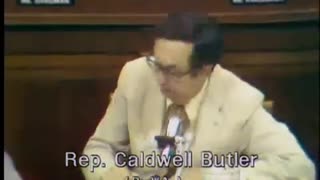 8:57:26
8:57:26
The Memory Hole
1 month agoNixon Impeachment Hearings Day 7 (1974-07-30)
654 -
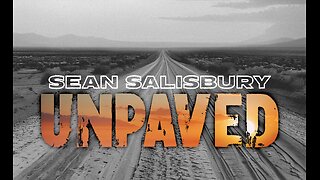
Sean Unpaved
2 hours agoOpening Day Recap! Crazy Ending To Bulls & Lakers, Sweet 16 Rolls On; Who Makes It To The Elite 8?
9.45K -

The Tom Renz Show
2 hours agoThe Elon Musk Doge Interview & SAI Chemtrails... Conspiracy Theory?
25.1K3 -
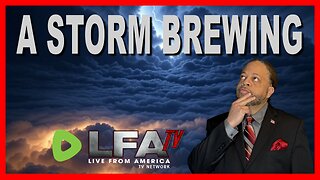 LIVE
LIVE
LFA TV
18 hours agoA STORM BREWING: POLITICAL CHAOS & CIVIL WAR AHEAD? | CULTURE WARS 3.28.25 2PM
681 watching -
 2:17:15
2:17:15
Tim Pool
3 hours agoDeportation Of Mahmoud Khalil, Is Trump VIOLATING The Constitution | The Culture War with Tim Pool
143K234 -
 1:50:26
1:50:26
Steven Crowder
5 hours agoDid Ezra Klein Red Pill Jon Stewart & JD Vance Initiates Greenland Takeover
385K197 -
![BREAKING: Billionaire Predicts $23.8M Bitcoin! [Retire Sooner Than You Think] | EP 1211](https://1a-1791.com/video/fwe1/d9/s8/1/o/t/f/x/otfxy.0kob-small-BREAKING-Billionaire-Predic.jpg) 1:16:07
1:16:07
Simply Bitcoin
3 hours ago $1.12 earnedBREAKING: Billionaire Predicts $23.8M Bitcoin! [Retire Sooner Than You Think] | EP 1211
29.6K3 -
 1:00:31
1:00:31
The Big Mig™
2 hours agoGlobal Finance Forum From Bullion To Borders We Cover It All |EP513
20.2K1 -
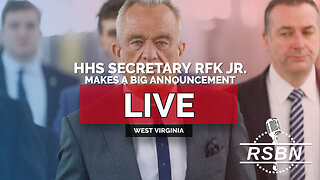 3:01:21
3:01:21
Right Side Broadcasting Network
7 hours agoLIVE: HHS Secretary RFK Jr. Makes a Big Announcement in West Virginia - 3/28/25
81.3K34 -
 29:27
29:27
Rethinking the Dollar
2 hours agoGlobal Finance at Risk: Fed Swap Lines Could Be In Jeopardy | Morning Check-In
26K